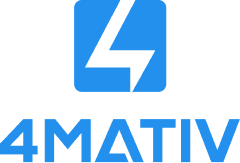Closing Capacity Gaps
Framing the Core Challenges
Over the past twenty years, school systems have been moving from a “one-size-fits-all” approach to a more learner-centric model; however, innovation in school transportation has not kept pace. Current K-12 transportation options are limited to a fixed set of high-cost transportation vendors and modes that are inflexible and burdensome to schools and families. Incentives are misaligned between school systems and transportation providers.
As a result, even where policy supports unbundling, school choice, and personalization, transportation is a major barrier for students and families to access high-quality learning opportunities. Never before has the need been greater to reimagine student transportation as an equitable and adaptable ecosystem of options that meet the needs of every student and family.
Key to reimagining student mobility is addressing capacity deficiencies—in technology, human capital, and overall mindsets.

Address Gaps in Data and Technology
School transportation data infrastructure lags behind transit and private logistics and transportation companies. As of 2015, a little over half of school transportation fleets (54 percent) used routing software and only a third used GPS to monitor buses. In 2021, Transfinder, a routing software company, found that 60 percent of their new clients did not have any routing software at the time of purchase. As a result, districts are unable to gauge their own efficiency, and they cannot collect data on ridership, on-time arrivals, and journey times and cannot gauge key metrics like cost per ride, vehicle utilization rates, on-time arrival rates, or student ride times (1, 2). Even where sophisticated systems have been implemented — like routing and GPS — often they’re not properly or fully integrated or leveraged to their full capability to drive decision-making and sound system design.
Exacerbating these issues are a general lack of IT infrastructure and poor connectivity that prohibit high-quality internet access, particularly in rural areas (2, 3). Spotty cellular service is increasingly coming into play as well where systems like driver tablets used for navigation or student tracking require connectivity on the road to properly function. Such unforeseen issues can majorly inhibit implementation of new systems and lead to massive waste, with technology unused and gathering dust on fleets of vehicles.

Train and Hire to Skilled Staff
Even when districts invest in technology and software, too often they realize they lack capacity to fully leverage those investments. For example, 4MATIV has worked with several districts who had made massive investments in GPS devices and student attendance-taking card readers but who did not have the human resources to leverage data emerging from the systems effectively. It’s also true that these systems are not designed to do the kind of aggregate reporting and analysis necessary to truly drive performance — and so the data coming out of them is not user-friendly. Interviews with seasoned transportation consultants across multiple organizations indicated that to function at a higher technical level, navigate complex logistics, and think more broadly and collaboratively, new talent with expertise in school mobility needs to be acquired, particularly in district director roles, and that departments need additional support and staff with advanced data, analytical and technical capacities (4, 5). Finally, front line workers like district’s routers, drivers and maintenance staff need ongoing training and technical support to implement, manage, and maintain new systems.

Expand Mindsets
Safety has always been a prevailing concern in student mobility – and deservedly so. But now it stands out as one key area that needs to be reframed in light of new options and new imperatives. While most safety conversations focus on bus crashworthiness vis-a-vis other modes, safety should be evaluated based on all relevant safety factors, including driver training and qualifications as well as technologies that can support crash avoidance, location tracking, on-board monitoring, and driver distraction detection (6). A more holistic definition of safety also needs to be understood in the context of all relevant trade offs that schools and families face, including costs and whether or not an opportunity is available to a student.
A pointed example of the old safety mindset is in the long standing prohibition of efficient and safe passenger vans. “Full sized” or 15-passenger vans in particular are prohibited almost universally, but partly because the messaging and regulations have been murky. For example, while Federal regulations allow for their use, they confusingly permit used 15-passenger vans while regulating the purchase of new ones. Even so, most state education agencies, departments of transportation, and DMVs tend to prohibit the use of these vehicles, and many still prohibit even smaller 6- and 10-passenger vans. And many DMVs also require expensive modifications that present a barrier to owner drivers and small fleets.
Conversations about how and when vans can be a safe option need to consider ways new technology can make drivers safer regardless of the mode they’re operating, and also consider how GPS tracking, communication, and video also contribute to safety regardless of mode. New crash-avoidance systems and features of electric vehicles are going to dramatically change small vehicle safety profiles as well. For example, safety guidance from National Highway Traffic Safety Administration (NHTSA) cautions about roll-over risk in larger vans, but they acknowledges that EVs with electronic stability control in new models and a lower center of gravity shows that “rollover is no longer a danger” (7, 8).
Vehicle-first thinking also continues to predominate the student mobility conversation. However, transit and active transportation (walking and cycling) can have positive effects for students and schools and can also be safe and good for student health. In 2020, Indianapolis Public Schools and 4MATIV conducted walk zone audits and transit analyses to identify where students could reasonably walk or take the bus to school. The mode shift yielded $2M in savings and helped alleviate the driver shortage by cutting 40 routes. Students who received transit passes also used them for non-school trips, improving access, while the district invested in more crossing guards and a program of student transit ambassadors to help students adapt to the new mode.
